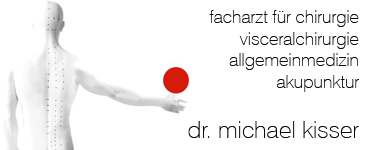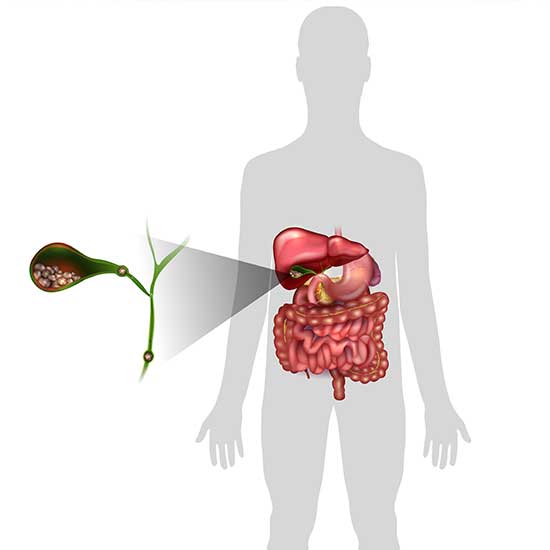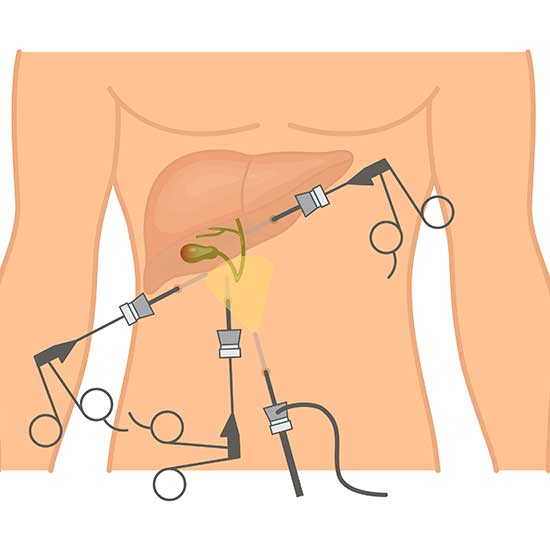1 in 5 women and 1 in 10 men over 40 have gallstones, which means women are more affected. Theories suspect the female hormone estrogen to be a risk factor.
Obesity, genetic disposition, liver decease, and diabetes also contribute to the risks of gallstone development.
What are the causes gallstones to develop?
The gallbladder stores bile, which is produced by the liver. When the different components of bile are disproportionate, they can form clumps that later evolve to be gallstones.
Symptoms of gallstones
In their early stages, gallstones do not cause much pain but can still damage the gallbladder. They can also cause inflammations of the pancreas, and, in the case of gallbladder wall breakage, inflammation of the peritoneum. The ladder can result in gallstones traveling into the intestine.
Chronic inflammations are the most common gallbladder ailment. The clogging of gall pathways can lead to jaundice and liver damage.
Pain:
When the gallbladder contracts to release bile, and a tiny stone is stuck in the pathway, it leads to massive colicky pain, because the gallbladder to repeatedly contract to empty itself. This can lead to colic attacks that only diminish when the stone has been forced out. Sometimes there can also just be a painful pressure when the gallbladder contracts but the liquid can still pass around or beside the clogging stone.
Ultrasound examination
It is possible to identify gallstones via ultrasound. The patient should come in on an empty stomach, as it is easier to spot gallstones when the gallbladder is full. We also examine the common bile duct, since stones may be found there as well.
In order to prevent additional stomach ailments, we recommend a gastroscopy. It is very common for gallstone patients to also suffer from a stomach inflammation or ulcer.
Treatment Options:
Some gallstones can be treated either by dissolving them with medication or shattering them through shock waves. However, this is only an option for a small number of patients, because it requires the stones to be a specific size, and not calcified.
Surgical methods:
For surgical removal of gallstones, we recommend a laparoscopy. The surgery is minimally invasive, performed with tiny incisions. The goal is to remove the gallbladder as a whole. If one were to open the gallbladder and remove only the stones, new stones would redevelop after a few months, making the entire surgery pointless.
“Dr. Kisser in Vienna has years of experience of performing laparoscopies.”
Risks and long-term results:
Life with no gallbladder has no disadvantages, although sometimes patients can have a very thin stool in the first couple of weeks post-surgery. A healthy diet that is rich in fiber is recommended. After a correctly done surgery, some ailments may occur for a number of reasons, such as mal growths or remaining or new gallstones.




